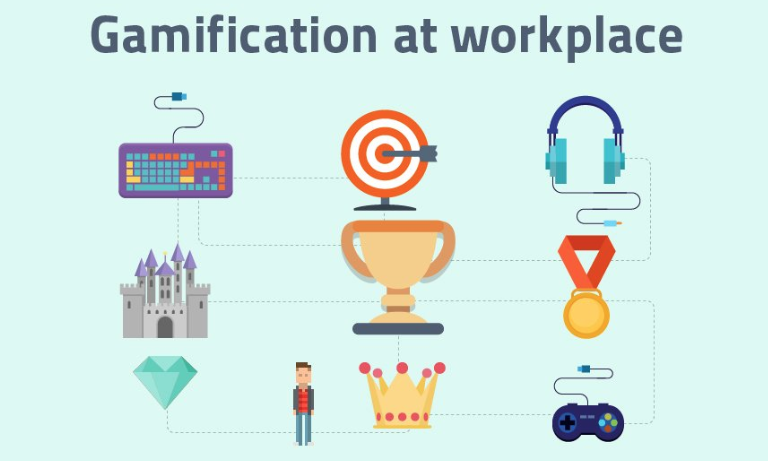 Gamification is defined as the use of game mechanics for non-game applications
Gamification is defined as the use of game mechanics for non-game applicationsIt is well known that staff training is often seen as something of a dull and compulsory practice; however, this does not have to be the case. The use of gamification is one way that can boost staff engagement and enthusiasm for training, with enjoyable training proven to lead to improved retention of information.
Gamification is defined as the use of game mechanics for non-game applications. It is already commonly used in schools and to encourage consumers to buy – as in the Starbucks reward app – but is a relatively new concept for in-work training.
In theory, any process or task can be gamified. The main goal is to boost user engagement through the use of game-like techniques, such as scoreboards, points and awards. This helps learners to feel more involved and purposeful.
Advantages of gamification in work training:
– Constant feedback: messaging systems between learners and tutors and the use of progression bars enable learners can see at a glance how they are getting on.
– Deadline setting: the courses offer the ability to create curfews or deadlines to motivate learners to return to the learning environment to refresh their knowledge and ensure their qualifications are up to date.
– A familiar environment: a classroom-like environment is important for learners who need peer recognition. Comparison against their peers can also motivate learners.
– Rewards: for completing difficult tasks or exercises, the learners receive special bonuses in the form of points or badges. This compensates learners for appropriate behaviour/collaboration in addition to academic achievements. The badges or points can then be converted into virtual goods or discounts.
– Editable profile: learners can create their own profile, complete with avatar, and customise their dashboard and profile details according to their preferences. They can select their courses and see what they have passed previously, helping them to focus on positive results.
– Clear progression path: the learners are kept informed of how many modules they have completed successfully and the next step is clearly laid out so that they know what to expect next. Anticipation is a notable motivator.
Drawbacks
Perhaps the main drawback to any e-learning system is the lack of interaction with other participants and the instructor, which may reduce the emotional connection and investment. To compensate for this, the gamification must motivate the learner and provide a tangible and worthwhile reward; for example, learners will be more driven to complete their course if they think they might receive a lower grade than their peers. Ability is also a factor.
Gamification can make training much more enjoyable for staff; in turn, this will boost their productivity and skillsets.
Recruiters love this COMPLETE set of Accredited Recruitment & HR Training – View Training Brochure








